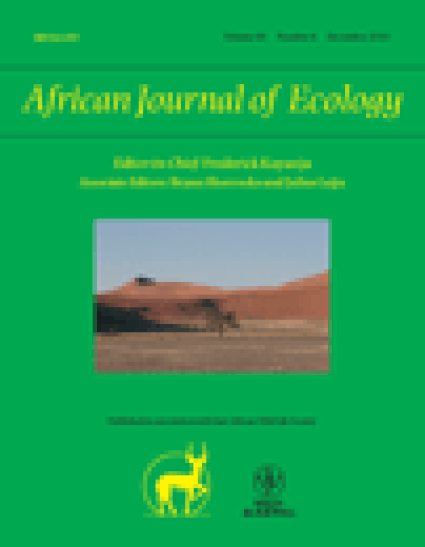
Although studies have explored how habitat structure and disturbance affect arthropod communities, few have explicitly tested the effects of both structure and disturbance level across trophic levels and phyla. We present here the results of a study conducted in the Arabuko-Sokoke Forest (ASF) of coastal Kenya, in which abundance of arthropods and one of their avian predators, the East Coast Akalat Sheppardia gunning sokokensis was compared in relatively undisturbed habitat (outside elephant roaming areas) and in disturbed habitat (inside elephant roaming areas). Vegetation structure in both areas was measured using several metrics, including leaf litter depth, understory vegetation density, animal disturbance and fallen log counts. Leaf litter and coleopteran abundance were higher outside the elephant roaming areas, whereas understory visibility, animal disturbance and dipteran diversity were much higher inside the elephant areas. Species composition of several arthropod taxa (e.g. Hymenoptera, Coleoptera, Diptera, Hemiptera and Araneae) was also influenced by degree of disturbance, whereas akalat abundance was inversely related to understory visibility. Our results suggest that differences in species sensitivity to habitat disturbance and vegetation structure across trophic levels should be incorporated into the management and conservation of rare and endangered species.
Resume Bien que des etudes aient deja explore comment la structure et la perturbation de l'habitat affectent des communautes d'arthropodes, peu ont reellement teste les effets de la structure et du niveau de perturbation parmi les differents niveaux trophiques et phylums. Nous presentons ici les resultats d'une etude menee dans la foret d'Arabuko-Sokoke (ASF), sur la cote kenyane, ou l'on a compare l'abondance d'arthropodes et d'un oiseau qui est un de leurs predateurs, le rouge-gorge de Gunning Sheppardia gunning sokokensis, dans un habitat relativement intact (en dehors de tout domaine vital des elephants) et dans un habitat perturbe (dans ces domaines vitaux). On a mesure la structure de la vegetation dans les deux milieux en recourant a diverses mesures, notamment la profondeur de la couche de litiere de feuilles, la densite de la vegetation du sous-bois, la perturbation animale et le nombre d'arbres tombes. La litiere de feuilles et l'abondance de coleopteres etaient plus grandes en dehors du domaine vital des elephants, tandis que la visibilite en sous-bois, la perturbation animale et la diversite des coleopteres etaient beaucoup plus grandes a l'interieur des zones parcourues par les elephants. La composition des especes de plusieurs taxons d'arthropodes (ex. hymenopteres, coleopteres, dipteres, hemipteres et araneides) etait aussi influencee par le niveau de perturbation, alors que l'abondance du rouge-gorge de Gunning etait inversement liee a la visibilite en sous-bois. Nos resultats suggerent que la sensibilite des especes a la perturbation de l'habitat et a la structure de la vegetation a tout niveau trophique devrait etre integree a la gestion et a la conservation des especes rares et en danger.
Available at: http://works.bepress.com/john_banks/19/
